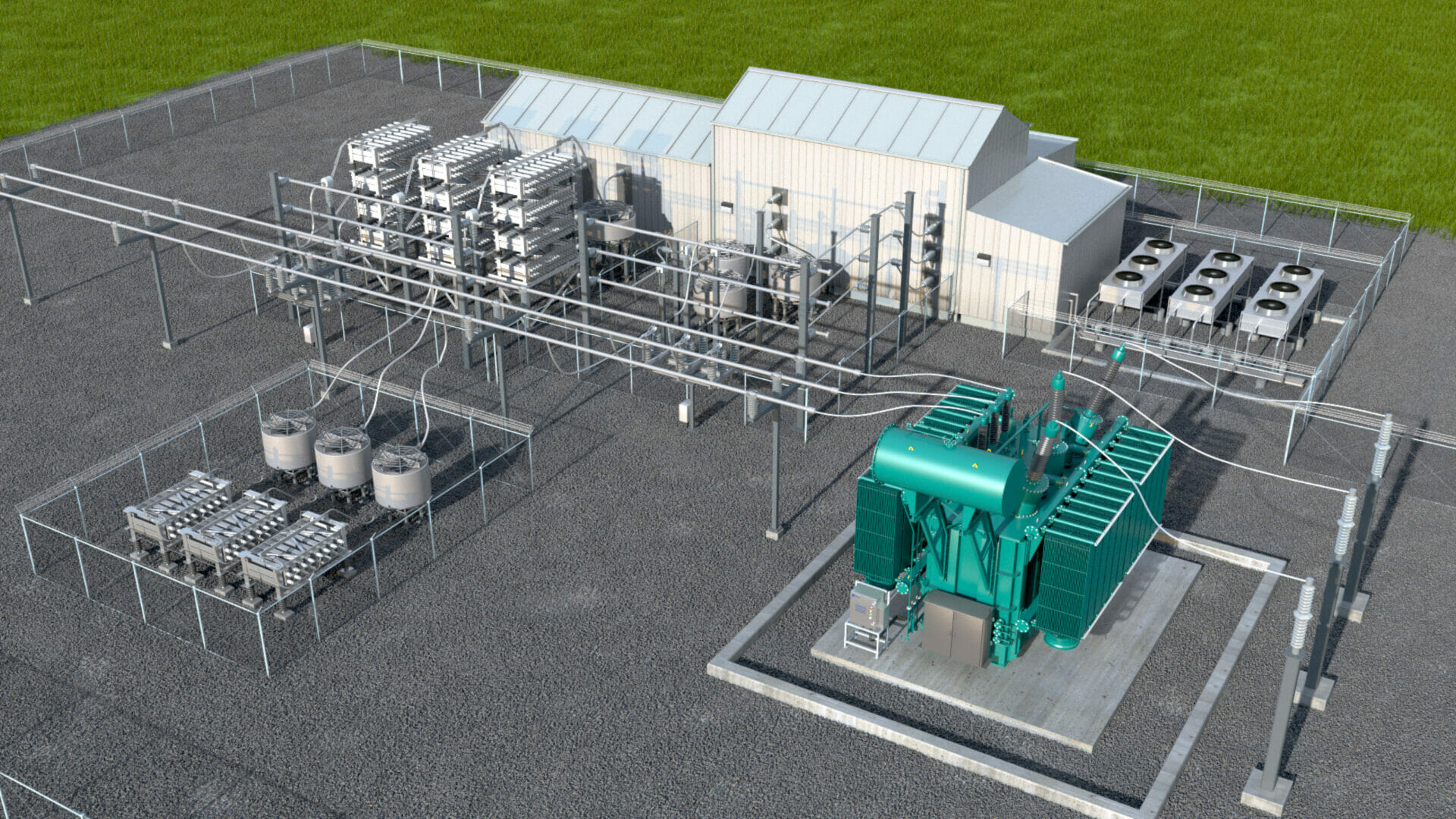
Already running almost 400 trains a day, Eurotunnel is forecasting a significant increase in traffic. But increasing the power of its network to ensure a constant flow of electricity is critical. A new Converter Station is being constructed – and it requires substantial concrete ground-bearing base units. Traditionally steel rebar has been used as standard reinforcement – but here Combar is the preferred material.With more than 4.2 million vehicles and 20 million passengers travelling under the Channel each year, the Eurotunnel is recognized as the world’s busiest rolling motorway. It takes almost 400 trains a day to transport these numbers and traffic is forecast to increase significantly within the next few years. To meet this level of demand, Eurotunnel needs to substantially increase the power and stability of its network to ensure a constant flow of electricity. This is especially pertinent during peak demand times when up to eight trains can be running simultaneously inside the Tunnel. As a result, Eurotunnel has awarded GE Grid Solutions a contract to supply a Static Synchronous Compensator (STATCOM), to improve the stabilisation of power supply on the catenary traction system of the Channel Tunnel. Used on alternating current electricity transmission networks, this regulating device provides grid operators with reactive power compensation and an improved range of operational voltage.
World’s largest for a railway traction system
The new Converter Station will be sited at Folkestone in Kent; and when completed will be the world’s largest load balanced STATCOM technology connected to a railway traction system. It is claimed that the solution will reliably power almost double the Eurotunnel traffic capability. Michel Boudoussier, Chief Corporate Officer at Getlink (formerly Groupe Eurotunnel, the public company that manages and operates the Channel Tunnel) commented: ‘Our choice to go with GE’s STATCOM will put Eurotunnel at the forefront of electrical regulation technology for the new generation Velaro trains. It will also enable us to continue to purchase electricity where it is least expensive“.
Steel is not the ideal solution for reinforcement
The STATCOM utilises highly dynamic voltage source compensators and along with the reactor and transformers, the Folkestone Converter Station requires substantial multiple concrete ground-bearing base unit slabs. Traditionally steel rebar has been used as the standard reinforcement in constructions like this, but despite its inherent strength, steel is not the ideal solution for reinforcement – especially in electromagnetically sensitive environments. Where high electric currents are concerned, inductive currents are generated within the reinforcing steel. If located too close to these coils there will be a loss of strength as the steel rebar heats up. There are seven base units at the Folkestone site and all have Schöck Combar reinforcement specified, with a minimum design value tensile strength of 445N/mm2. The elements involved on the project are all part of the Schöck Combar range of ribbed reinforcing bars, made of corrosion resistant glass fibre bound by a vinyl ester resin. The reinforcement cages incorporate a combination of prefabricated bent bars, straight bars, tubes and spacers – all installed within the concrete ground-bearing base unit slabs – a total area of around 416 square metres.
A special two-part manufacturing process
It is the two-part manufacturing process which enables the ribbed GRP bars to meet the requirements of reinforcing bars. First, in the pultrusion process, high-strength glass fibres, bundled as densly as possible, are pulled through a closed chamber where they are impregnated with a synthetic resin. The parallel alignment of the fibres results in maximum strength of the material. The profiling process then sees the ribs cut into hardened bars and given a final coating. As the vinyl ester resin is diffusion tight and every glass fibre is completely surrounded by resin, the result is a durability in concrete of up to 100 years. Because the product is so highly durable, much stronger than steel, corrosion resistant and not electrically conductive, Schöck Combar reinforced foundations can be built near transformer coils and reactors.
The enclosures can be much smaller, without hindering the units performance, which significantly reduces construction and operating costs. Combar is therefore also ideally suited for installations in switchyards; steel mills; aluminium smelters; research and industrial facilities. Wider application examples include its easy machinability in tunnel construction and complete corrosion resistance when building bridge parapets and barrier walls.

